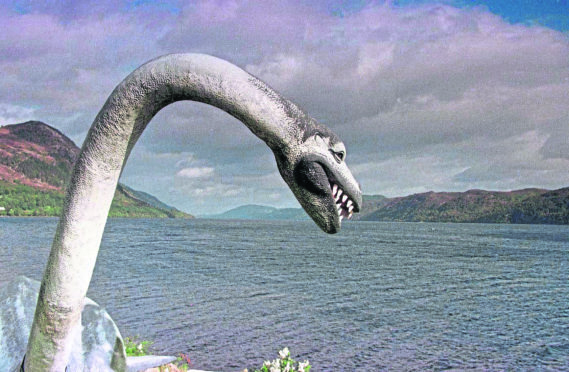The Loch Ness Monster is worth nearly £41 million a year to the Scottish economy, new research reveals.
The total is £11million more than the previous estimate – compiled four years ago – and is said to be a “conservative” calculation.
The study, carried out by Chartered Accountant Gary Campbell, who also keeps the official register of sightings of the creature, uses the most up-to-date visitor figures for the Loch Ness area.
Confidential commercial data was supplied by a whole range of tourism operators and other businesses throughout the summer.
And it shows that, myth or fact, Nessie is a monster money-maker for the Highlands.
“We analysed the number of people that visit the attractions around the loch, along with those who took to the water to try to get a closer look for Nessie and then took other research into tourism spend on overnight accommodation and food,” said Mr Campbell.
“We then added in the day trippers and from this we conservatively estimate that the draw of the monster is adding £40.7m to the local economy each year.”
Mr Campbell, who is based in Inverness, said: “Over the past four years, there are less than ten days each year when Nessie doesn’t get a mention somewhere in the world. It is this top global brand recognition that then helps steer tourists not only into Scotland but to come north to Loch Ness as part of their holiday – it also helps to explain the half a million visitors that are coming to the loch every year.”
The research has been endorsed by tourism ambassador and director of Loch Ness Marketing, Willie Cameron.
“From my perspective and from the numbers and spend we see at the loch, I’d say that this is a very conservative estimate but at over £40m per annum, it shows that Scotland’s rural economy can make a significant contribution to the health of the overall Scottish economy,” he said.
Given that many of the visitors are from overseas, it also really helps with the export ambitions of the country as a whole.”
By way of comparison, the leisure and tourism cycling market is estimated to be worth around £116m to the economy, Golf £286m and Gaelic £149million.
“When you look at these other sectors, and the fact that Loch Ness is only one small destination for visitors, it’s pretty clear that Nessie is a significant contributor to the tourism economy.” said Mr Campbell.
“At the end of the day, I suppose that it doesn’t really matter if you believe whether the monster exists or not as she’s working for the whole of Scotland anyway.”
According to Google, there are around 200,000 searches each month for the Loch Ness Monster, and around 120,000 for information and accommodation close to Loch Ness.
After record sightings in 2017, Nesse has been spotted eight times this year.
The latest sighting came on September 5, when Dipak Ram and Tom Smith – on holiday from England – saw a dark shadow in the water near Dores beach at 5.35pm. Initially they thought was just a wave but the shadow remained persistent for about 30-35 seconds with water moving around it.
When they zoomed in using their camera phone, it became much more apparent that it was a stationary object . After 30-35 seconds, it disappeared downwards into the water.
On August 17, Charlotte Robinson who took with her iPhone what experts say was the “best picture” of the Loch Ness Monster “for years.”
Charlotte, 12, from Leeds in Yorkshire was staying at Loch Ness Highland Lodges at Invermoriston when Nessie popped up about 50 feet away – and on the first day of her holiday,
The creature surfaced for about a minute before re-surfacing about ten feet further away seven minutes later – but for less than 60 seconds.
Charlotte was on holiday with parents Kat, 41, a business intelligence data analyst, and father Dave, 52, a factory worker.
